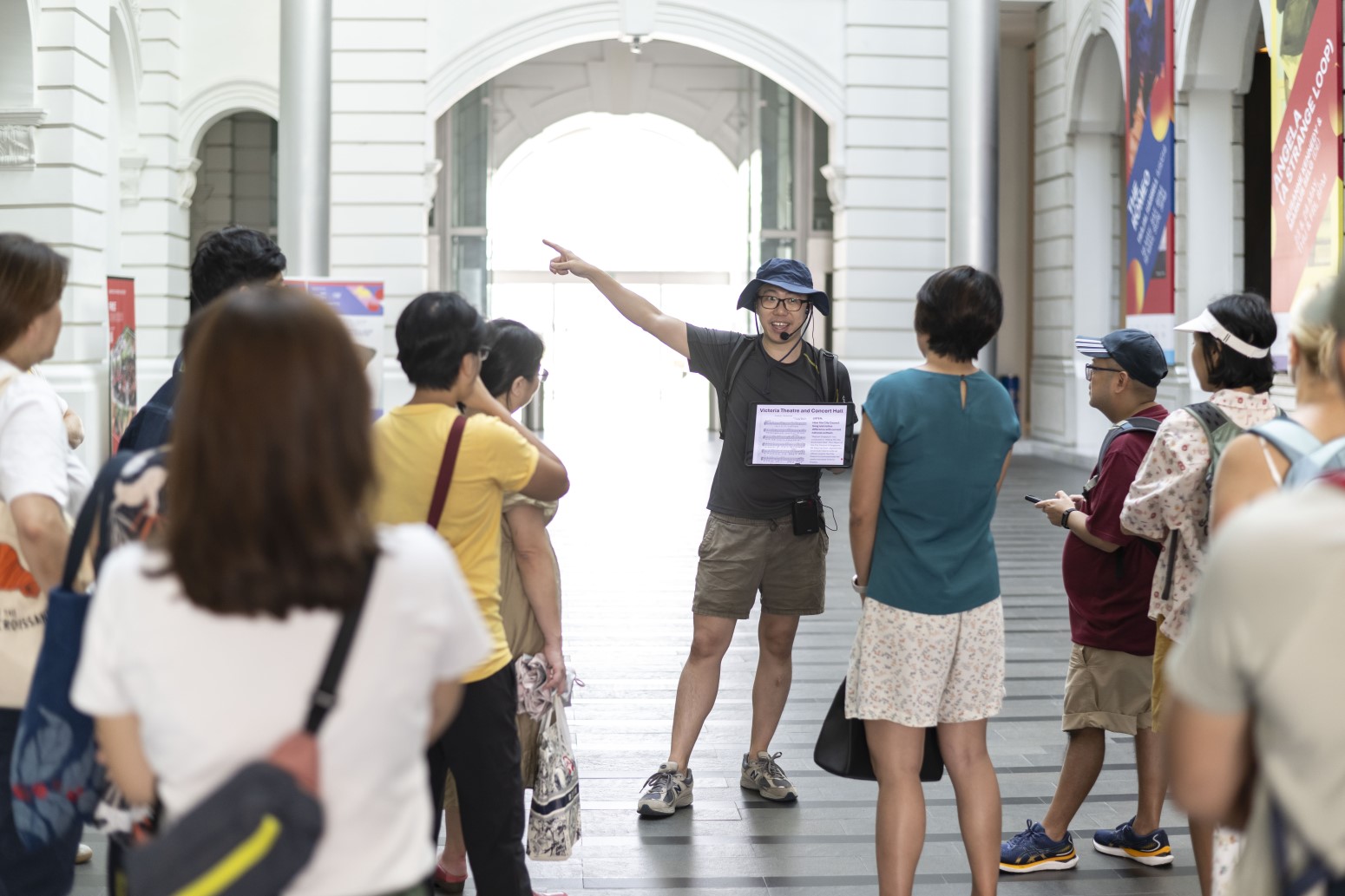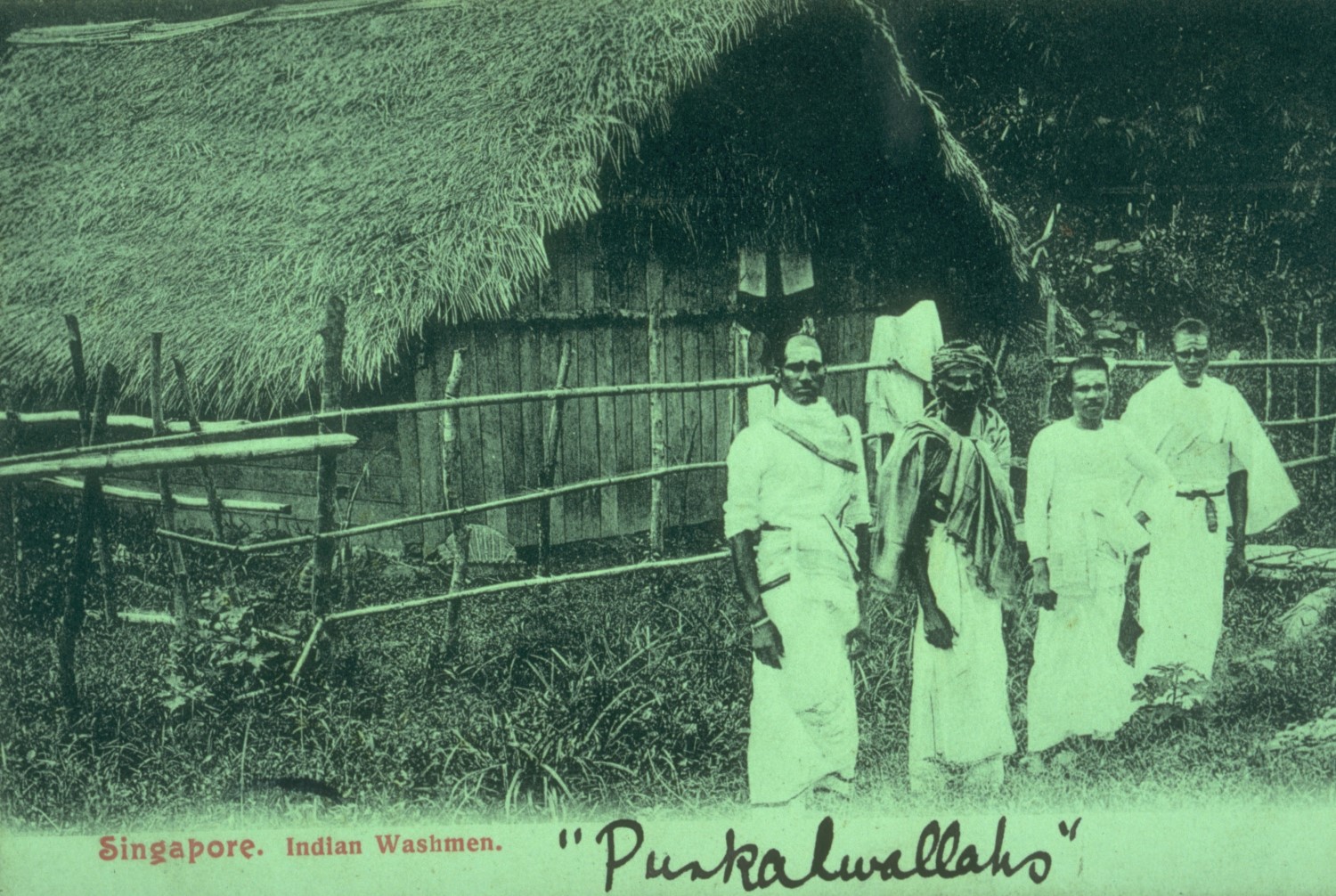The Urban Heritage Explorer: One Man’s Mission to Uncover Singapore’s Past
From leading heritage walks to educating on social media platforms, Ho Yong Min is reintroducing the history of Singapore’s urban landscape.
By Jolynn Lim
18 August 2025
 Yong conducting a tour. Courtesy of the Asian Civilisations Museum.
Yong conducting a tour. Courtesy of the Asian Civilisations Museum.To most people, history is a thing of the past, a memory set in stone. To Ho Yong Min, however, history is a living thread connecting historical accounts and events to the present and, more importantly, to the shared experiences of Singaporeans.
Ho Yong Min, who prefers to be known as Yong, first led heritage walks around Singapore as a hobby in 2010. Having majored in urban geography at the National University of Singapore, Yong is aware of the connections between old places and buildings and contemporary life.
Through The Urbanist Singapore, a company focused on sharing Singapore’s urban heritage, Yong educates Singaporeans on how vestiges of our fascinating history are interwoven into the urban and social fabric of Singapore today. “There were always these stereotypes [about Singapore being dull]. And I was quite determined to show that Singapore is not boring and clinical,” he said.
Framing the Past
In December 2023, Yong launched into the social media scene. He began creating engaging short-form video content for platforms like TikTok and Instagram under the handle, The Urbanist Singapore, delving deeply into the Singapore urban landscape and its history.
Six months later, Yong left his job at the Singapore Management University as the Associate Director for Undergraduate Education to fully pursue his social media career. This gave him more time to uncover the hidden stories of Singapore’s cultural and urban heritage with Singaporeans and foreigners alike. “I felt that we are very distracted as a generation. Arts and heritage [became] more of an afterthought than something that we care and think about,” he said.
Hunting Down a Lead
One of his most popular videos is on the forgotten Stamford Canal, released on 8 March 2024, which has since garnered more than 47,000 likes on Tiktok and over 4,000 likes on Instagram. It started with him wondering why there were so many escalators at Citylink Mall. People had to go down an escalator only to go up again about 10 m away, and there was also no direct connection between Basement 1 of Raffles City and City Hall MRT Station. It turned out that the numerous escalators were structured in such a way to avoid the still present but concealed Stamford Canal.
When Yong was researching his video on the Anchorpoint shopping mall, he discovered the interesting story behind the name of the nearby ABC Brickworks Market & Food Centre. The letters “ABC” came from the food centre’s proximity to the former Archipelago Brewery Company (ABC), the producer of Anchor beer, while “Brickworks” referred to Alexandra Brickworks which once stood at the junction of Pasir Panjang and Alexandra roads.1 [Fun fact: The bricks produced by the company were used to construct public buildings, including the former National Library on Stamford Road, the Tiong Bahru flats by the Singapore Improvement Trust and the Gillman Barracks.] This inspired him to make a video on the history and heritage of the ABC Brickworks Market & Food Centre, released in January 2025.
“Sometimes, you also stumble upon things that you were not searching for, but because you were clicking here and there, you see other images, images that [showed a place] you never knew look like [this]. And then, maybe that sparks off an idea for another video,” Yong said.
Working with Historical Records
Yong embarked on The Urbanist Singapore to make history come alive and bridge the past and the present. “I want to use old photos to show [people] what it is like today or [do a] compare and contrast, to talk and have discussions around what’s still here and what’s gone,” he said.
For his March 2025 video on the origins of the name Dhoby Ghaut (from the Hindi word dhobi, which means “washerman”, and ghat, which refers to the steps leading down to a body of water), Yong included a 1900s photo of Indian washermen from the National Archives of Singapore. These dhobies used to wash laundry in the Stamford Canal. The photo provides a visual link to an old trade of Singapore that we no longer see today.2
 Indian laundry men or dhobies in Singapore, 1900s. Courtesy of National Archives of Singapore.
Indian laundry men or dhobies in Singapore, 1900s. Courtesy of National Archives of Singapore. In many ways, the relationship between the archives and Yong is a partnership. The rewarding part, Yong noted, is when he puts an entire video together that combines archival materials with his unique brand of storytelling and understanding of the materials. “My journey has been very intertwined with archival materials. It’s not just a tool but a storyteller in itself, I feel, in what I want to convey and impress upon,” he said.
 Yong at a video shoot for "Be Inspired By History", a campaign by the National Library Board inviting Singaporeans to use historical records from the National Library and National Archives to create new and original works. Photo by Woo Pei Qi.
Yong at a video shoot for "Be Inspired By History", a campaign by the National Library Board inviting Singaporeans to use historical records from the National Library and National Archives to create new and original works. Photo by Woo Pei Qi.For the 60th anniversary of Singapore’s independence, Yong created a tour in April 2025 titled “Majulah Singapura: The Untold Story of a Nation’s Anthem”, which explores the history and origins of the song, its eventual adoption as Singapore’s national anthem as well as the life of its composer, Zubir Said.
Places visited along the tour include the Kramat of Sultan Iskandar Shah on Fort Canning, Central Fire Station, Elgin Bridge, St Andrew’s Cathedral, Civilian War Memorial, Stamford Bridge stone stump, National Gallery Singapore, and the Victoria Theatre and Concert Hall. When both sessions of the tour were launched, they sold out within 30 minutes.
The inspiration for the tour came from a BiblioAsia article, “May Singapore Flourish!”, about the municipality of Singapore receiving a coat of arms by royal warrant on 9 April 1948.3 On the warrant document is the crest of the Singapore municipality, consisting of a lion with a coconut palm behind it, with the coat of arms below the crest. But what stood out for Yong were the words “Majulah Singapura” – Singapore’s national anthem today – inscribed just below the cost of arms.
Intrigued, Yong combed through old newspaper articles on NewspaperSG, the National Library’s online resource of current and historic Singapore and Malaya newspapers, to trace the motto’s original use and evolution.4 “It was amazing to see how much you can find out through what was shared in newspaper articles from the past,” he said.
Yong spent about five months researching the history of the motto and planning the route for his tour. Since the launch, the tour has been organised exclusively for schools, organisations and private clients. He will be bringing it back for the public to coincide with the launch of SG Culture Pass (Singaporeans aged 18 and above have $100 worth of credits that they can use to defray the cost of tickets to arts and heritage programmes).
On a Mission
Yong is very careful to avoid looking at history through the lens of nostalgia. Most of his videos, like the one on the Stamford Canal, tend to focus on the facts and history behind each landmark or building, and how they affect the present. He recognises that although videos that evoke a sense of nostalgia may get him more views or likes, he said: “I think [I’d] rather stay true to what my mission is, which is making heritage accessible, alive and meaningful in constructive and productive ways.”
Besides creating content for social media, Yong collaborates on heritage ventures, leads heritage walks upon requests, and works with schools and organisations to curate activities and storytelling walks.
For Yong, this insistence on keeping history alive comes from his belief that heritage is a living thread that is passed down from generation to generation. His parting shot: “What drives me is the fact that I think we have so many more stories yet to be shared that needs to be shared.”
Notes
-
“Progress of Brick-Making Through the Centuries,” Straits Times, 2 January 1932, 11. (From NewspaperSG); Stephanie Ho, “Pasir Panjang,” Singapore Infopedia. Article published 8 July 2016. ↩
-
National Archives of Singapore, “Indian Laundry Men or Dhobies in Singapore,” 1900s, photograph. (From National Archives of Singapore, Media - Image no. 19980007379 - 0033) ↩
-
Mark Wong, “May Singapore Flourish! Revisiting the Municipal Coat of Arms,” BiblioAsia 13, no. 4 (January–March 2018):58–61. ↩
-
“Official Motto for Penang Adopted: ‘United and Loyal’,” Singapore Standard, 7 November 1950, 4; Harry Miller, “Majulah Singapura!” Straits Times, 23 September 1951, 1; “What’s in a Motto?” Straits Times, 10 October 1951, 6. (From NewspaperSG) ↩

